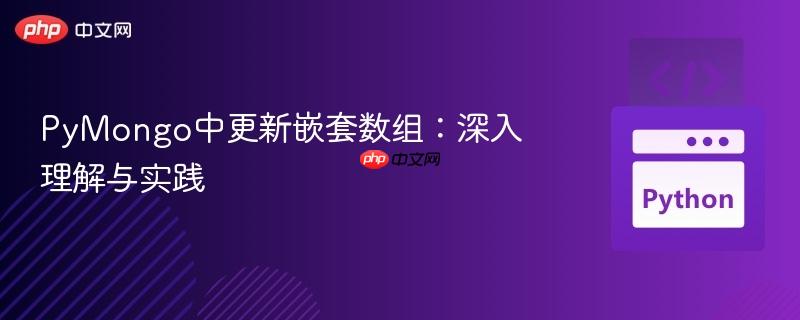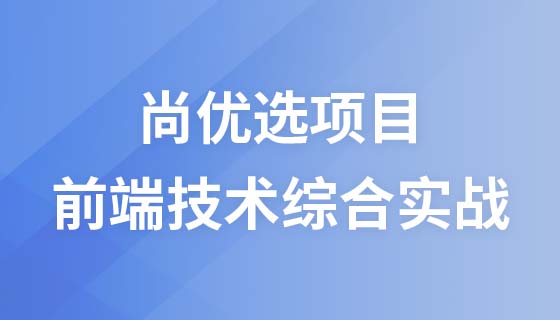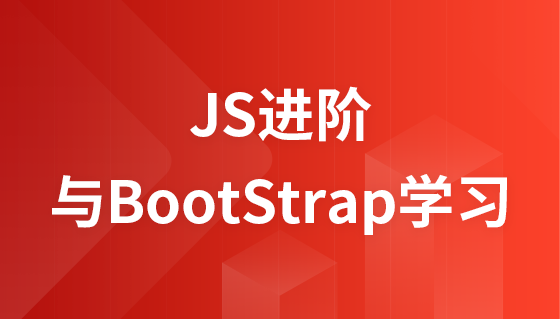
在mongodb中处理复杂文档结构,尤其是涉及嵌套数组的更新,是常见的操作。当需要向一个已存在文档中的某个特定子数组添加新元素时,开发者常会遇到如何准确指定更新路径的挑战。本文将深入探讨如何使用pymongo实现这一目标,涵盖从首次创建嵌套数组到后续追加元素的多种场景。
假设我们有一个用户文档,其中包含一个名为courses的数组,每个课程又是一个包含course_name和course_info的嵌入式文档。我们的目标是为某个特定课程(例如course_name为"great course"的课程)添加一个名为course_content的嵌套数组,并在其中推送内容。
初始文档结构示例:
{
'_id': ObjectId('65759a25ccee59d54778968e'),
'user_email': 'user@example.com',
'password': 'password123',
'courses': [
{
'course_name': 'great course',
'course_info': 'Course info great course'
},
{
'course_name': 'bad course',
'course_info': 'Course info bad course'
}
]
}期望的更新结果(首次添加 course_content):
{
'_id': ObjectId('65759a25ccee59d54778968e'),
'user_email': 'user@example.com',
'password': 'password123',
'courses': [
{
'course_name': 'great course',
'course_info': 'Course info great course',
'course_content': [{
'summary': 'the quick brown fox',
'info': 'this is from a particular source'
}]
},
{
'course_name': 'bad course',
'course_info': 'Course info bad course'
}
]
}期望的更新结果(后续向 course_content 追加元素):
{
'_id': ObjectId('65759a25ccee59d54778968e'),
'user_email': 'user@example.com',
'password': 'password123',
'courses': [
{
'course_name': 'great course',
'course_info': 'Course info great course',
'course_content': [{
'summary': 'the quick brown fox',
'info': 'this is from a particular source'
},
{
'summary': 'jumps over the lazy',
'info': 'this a great story'
},
{
'summary': 'dogs',
'info': 'dogs are cool'
}]
},
{
'course_name': 'bad course',
'course_info': 'Course info bad course'
}
]
}在尝试更新嵌套数组时,开发者可能遇到以下挑战:
为了准确地向嵌套数组中推送数据,我们可以采用两种主要方法:
当查询条件能够唯一确定父文档,并且能够通过该父文档的条件唯一确定courses数组中的一个元素时,位置操作符$是一个非常简洁高效的选择。它会更新在查询条件中匹配到的第一个数组元素。
核心思想: 在查询条件中同时指定父文档的_id和嵌套数组元素的条件(例如"courses.course_name": "great course")。在更新操作中,使用"courses.$.course_content"来指定更新路径,其中$代表匹配到的courses数组中的那个元素。
示例代码:
from pymongo import MongoClient
from bson.objectid import ObjectId
# 假设已建立MongoDB连接
client = MongoClient('mongodb://localhost:27017/')
db = client['mydatabase']
collection = db['mycollection']
# 示例文档ID和课程名称
session_document_id = '6576576759045839397565bd' # 替换为实际的_id
course_name = 'great course'
# 要添加的内容
new_content_item_1 = {
'summary': 'the quick brown fox',
'info': 'this is from a particular source'
}
new_content_item_2 = {
'summary': 'jumps over the lazy',
'info': 'this a great story'
}
new_content_item_3 = {
'summary': 'dogs',
'info': 'dogs are cool'
}
# 1. 首次为 'great course' 添加 'course_content' 数组并推送第一个元素
# 如果 'course_content' 字段不存在,MongoDB会自动创建它
try:
result = collection.find_one_and_update(
filter={
'_id': ObjectId(session_document_id),
"courses.course_name": course_name
},
update={
"$push": {
"courses.$.course_content": new_content_item_1
}
},
upsert=True # 如果文档不存在则创建,但在此场景下通常已有父文档
)
if result:
print(f"首次添加 'course_content' 成功,并推送第一个元素: {new_content_item_1['summary']}")
else:
print("未找到匹配文档或课程,或更新失败。")
except Exception as e:
print(f"更新失败: {e}")
# 2. 再次向 'great course' 的 'course_content' 数组中追加更多元素
try:
result = collection.find_one_and_update(
filter={
'_id': ObjectId(session_document_id),
"courses.course_name": course_name
},
update={
"$push": {
"courses.$.course_content": {
"$each": [new_content_item_2, new_content_item_3]
}
}
},
upsert=True
)
if result:
print(f"成功向 'course_content' 追加了两个新元素: {new_content_item_2['summary']}, {new_content_item_3['summary']}")
else:
print("未找到匹配文档或课程,或更新失败。")
except Exception as e:
print(f"更新失败: {e}")
# 验证更新结果
updated_document = collection.find_one({'_id': ObjectId(session_document_id)})
print("\n更新后的文档:")
import json
print(json.dumps(updated_document, indent=2, default=str))
client.close()解释:
当需要更新数组中多个匹配的元素,或者当位置操作符$不足以表达复杂的定位逻辑时,arrayFilters提供了更强大的灵活性。
核心思想:
在查询条件中指定父文档的条件。在更新操作中,使用"courses.$[
示例代码:
from pymongo import MongoClient
from bson.objectid import ObjectId
client = MongoClient('mongodb://localhost:27017/')
db = client['mydatabase']
collection = db['mycollection']
session_document_id = '6576576759045839397565bd' # 替换为实际的_id
course_name = 'great course'
new_content_item_1 = {
'summary': 'the quick brown fox',
'info': 'this is from a particular source'
}
new_content_item_2 = {
'summary': 'jumps over the lazy',
'info': 'this a great story'
}
# 1. 首次为 'great course' 添加 'course_content' 数组并推送第一个元素
try:
result = collection.update_one(
filter={
'_id': ObjectId(session_document_id)
},
update={
"$push": {
"courses.$[course].course_content": new_content_item_1
}
},
array_filters=[
{"course.course_name": course_name}
],
upsert=True
)
if result.matched_count > 0:
print(f"使用 arrayFilters 首次添加 'course_content' 成功,并推送第一个元素: {new_content_item_1['summary']}")
else:
print("未找到匹配文档或课程,或更新失败。")
except Exception as e:
print(f"更新失败: {e}")
# 2. 再次向 'great course' 的 'course_content' 数组中追加更多元素
try:
result = collection.update_one(
filter={
'_id': ObjectId(session_document_id)
},
update={
"$push": {
"courses.$[course].course_content": {
"$each": [new_content_item_2]
}
}
},
array_filters=[
{"course.course_name": course_name}
],
upsert=True
)
if result.matched_count > 0:
print(f"使用 arrayFilters 成功向 'course_content' 追加了新元素: {new_content_item_2['summary']}")
else:
print("未找到匹配文档或课程,或更新失败。")
except Exception as e:
print(f"更新失败: {e}")
# 验证更新结果
updated_document = collection.find_one({'_id': ObjectId(session_document_id)})
print("\n更新后的文档:")
import json
print(json.dumps(updated_document, indent=2, default=str))
client.close()解释:
本文详细阐述了在PyMongo中向MongoDB文档的嵌套数组推送数据的两种主要策略:利用find_one_and_update结合位置操作符$,以及使用update_one或update_many配合arrayFilters。这两种方法各有优势,开发者应根据具体的业务需求和查询复杂性选择最适合的方案。掌握这些技术对于有效管理MongoDB中的复杂嵌套数据结构至关重要。
以上就是PyMongo中更新嵌套数组:深入理解与实践的详细内容,更多请关注php中文网其它相关文章!

每个人都需要一台速度更快、更稳定的 PC。随着时间的推移,垃圾文件、旧注册表数据和不必要的后台进程会占用资源并降低性能。幸运的是,许多工具可以让 Windows 保持平稳运行。




Copyright 2014-2025 https://www.php.cn/ All Rights Reserved | php.cn | 湘ICP备2023035733号